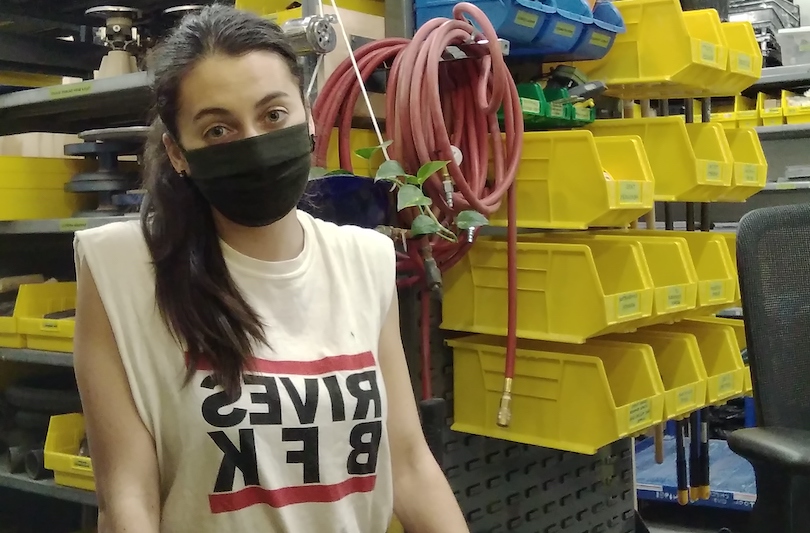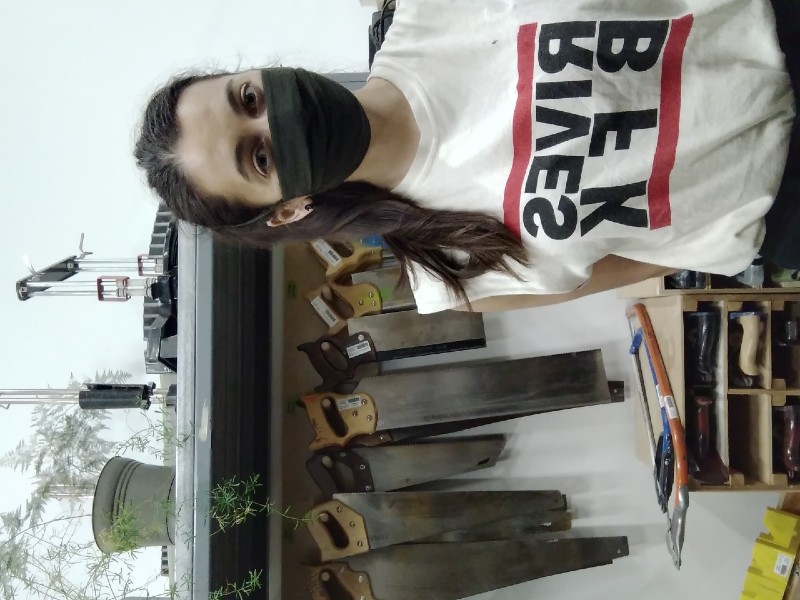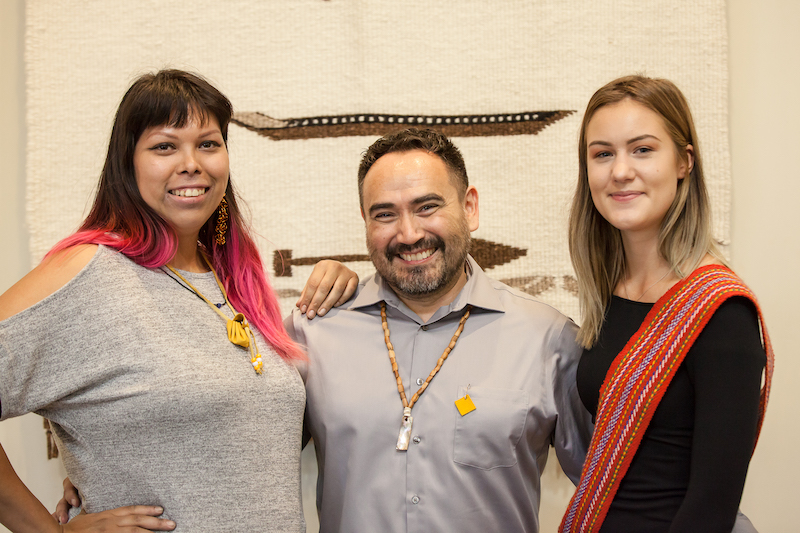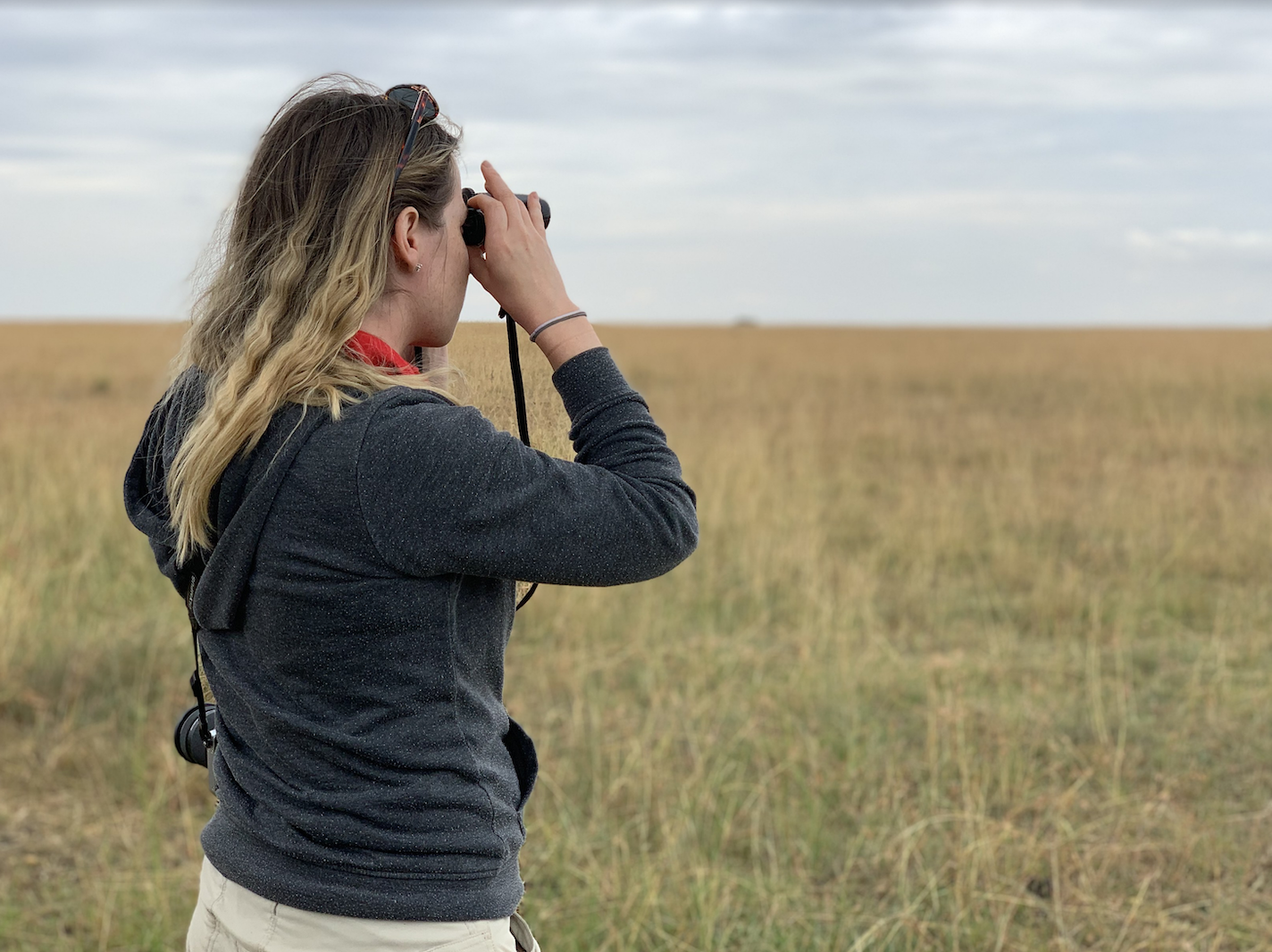
After a long day of being on her feet working at a children's art studio, Sarah Ellis Clark was sitting on a bus when she glanced over and saw someone pull out a Vancouver Public Library card. In that instant, something clicked for her. It was one of those moments where everything kind of falls into place, and you get a clear sense of where your life is supposed to be going.
Reflecting on that pivotal moment, Sarah remembers being a little surprised at why this career path hadn't seemed evident to her before. "I don't know why I hadn't thought of libraries before. I'd volunteered in libraries in high school. I did a co-op at the Emily Carr library during my undergrad. But I had somehow never put two together."
Given she'd already done her BFA in critical and cultural practices, Sarah wanted to take a program that would offer practical, applicable, and relevant to where she wanted to go with her career. So when she looked at Langara's Library and Information Technology program, it seemed like the ideal fit for her life and career, mainly because of the practicum component in the program.
In her first year of the program, Sarah passionately dove into her studies and getting to know fellow students in the program. She remembers "really enjoying the in-person learning. I feel like we had a great cohort that was working together." Their cohort had created a dedicated Libtech Slack channel for a mix of academic and social topics. Here she was able to immerse herself in conversations with like-minded classmates who were equally passionate about library-specific subjects like cataloguing. Still, equally, it was a social space to get recommendations on books and life in general. "It was lovely," says Sarah wistfully.
"Then the world all changed, and we went home."
Along with losing face-to-face learning, Sarah's plans for her practicum suddenly sent sideways as well.
"I was all set to work at the geological library downtown", she explains. "I was so excited. My dad's a geologist, and it looked like his office." With Covid-19 restrictions, however, the library would be closed, and no staff were allowed to work in the space.
Sarah concedes that it was a major "a bummer", but she quickly points out that Diane Thompson, an instructor and chair of the Library Information Technology program, instantly went to work searching for an online alternative. Sarah was blown away by how Diane supported her in finding an alternative placement. "Knowing what my interest was in visual materials and art history, and be able to, last minute, in the middle of a pandemic, find a practicum for me that fit all those interests? I mean, that was so cool." Sarah credits Diane's tenacity and "serious search skills" for finding her a virtual practicum with the Chicago Button Library.



At first, Sarah was resistant to doing a virtual practicum as she'd signed up for the program to have that hands-on experience but realized that she'd have to be flexible. She says she just realized, "this is the way our world is now", and that she'd have to adapt.
Sarah's primary job was to find contextual information for buttons where there might be only an image to go on and little to no other information about its origin. "So I would search for that image, find out about the historical or cultural context of that button, write that into museum voice, and catalogue it accordingly to the standards." Her first day on the job, she describes as being "really difficult," as the reality of the virtual practicum presented several initial research challenges. She couldn't find any information on her first three buttons and felt a little discouraged. The program had no synchronous components, so unlike her lively Lib Tech class before the pandemic, Sarah was pretty much on her own to figure things out.
She relied on her background in art, print and design and used her skills to unravel the mystery of the buttons' origins. "I would be like, I see that linework looks like lithography. Oh, I see; that looks like a pencil was used in that image. Since I know and can recognize different fonts, that was really lovely. Because I felt like my prior experience was being pulled into my work."
The unique subject matter posed specific research challenges because, as Sarah explains it, "buttons are ephemeral objects. There's very little documentation for them. They're often created for a moment, an event." For her process, making "legitimate connections" was central to her research, and having "sound sources" she could cite and publish to the Museum's collection was critical.
For example, she had only an image of a green button with a Batman wing with a symbol on it and had to find enough information to create a catalogue entry. But she noticed the symbol was, in fact, a star of David with a text that read, Holy Moses. So, she carefully researched the history of Batman and all the Batman symbols to figure out when this particular bat symbol was created along with the colloquial phrase, Holy Moses. "It felt like detective work, but for buttons," she says with a laugh.
Sarah admits that her practicum work sometimes involved "academically and critically informed speculation," as was the case of the Batman button description she eventually created for the library. "I connected the Holy Moses text to the fact that the first two Batman writers were of Jewish descent and that during the 1960s, the Batman television series, Robin used the phrase 'holy' before almost everything. So, there's a play on words which is kind of neat."
Doing forensic-level button research taught Sarah invaluable search skills and a host of interesting, eclectic origin stories and data. "I'd be a great dinner party guest now,” she suggests. “I know so many fun facts now.”
But her real passion, she admits, is cataloguing. "It's fun because it has like this coding computer language, but you're still talking about physical books. And it's this lovely idea of okay, so how can we make this information accessible. So every time you're making a catalogue record, you're thinking about your patrons and what they're going to need to find or access or know about this book." Sarah explains that it's not just the information inside the book or item, but thinking through the lens of the patron and asking questions like, is it going fit in their backpack? Will they be able to carry it home? Should they be booking time to come to look at this book in person? Core to these questions is empathy, which seems to come naturally to Sarah as she describes the fundamental question she believes is central to good cataloguing, which is to ask yourself, what do my patrons need?
Despite doing her practicum during a global pandemic, Sarah found ways to stay focused on her work and practise self-care despite the challenges of studying and working under extraordinary circumstances. She shares a one-bedroom with her partner, and both work from home, but in September 2020, she started working two days a week at the Emily Carr tool library, which was a welcome break to get out of the house and do something she loved.
Working at the Emily Carr Tool Checkout, which Sarah describe as "essentially a tool library," has allowed Sarah to apply all of her Lib Tech learning and skills in a professional setting. "We lend drills, saws, hand tools—we're kind of the land of loss toys," she explains. She cites stringent protocols and staggered shifts as a key reason she's been able to go in person to her job.
Asked where her library dreams will take her after she's completed the Library Information Tech program, Sarah is quick to describe her dream job: "It would be an art library working with an alternative collection." She adds that her time at the button museum will not only look great on her resume and help her land that dream job, but it's given her exposure to alternative spaces and provided her with practical archival skills she can bring into her next job.
Reflecting on her experience at Langara, Sarah says the Lib Tech program gave her "language and professional tools to articulate a practice of organizing and system design that built upon my personal desires and aspirations to improve access and care."
Doing her practicum during a global pandemic may not have been how she'd envisioned starting in the program, but in the end, she made the best of it is and remains grateful to the faculty who helped make it happen. "My virtual practicum sharpened my search skills and tenacity. Two things that will surely serve me well wherever my career takes me."

